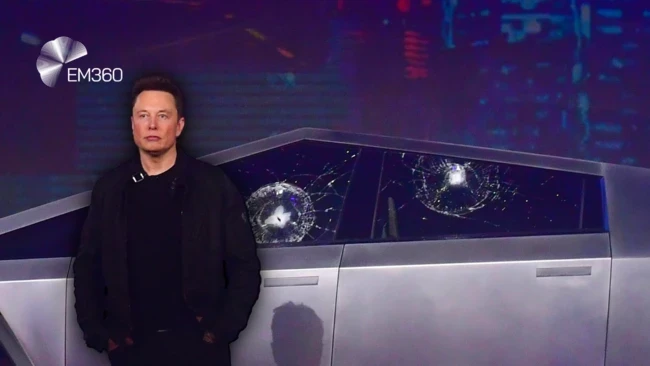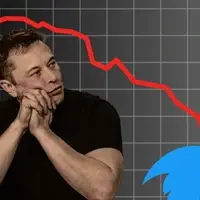
The past twenty years have been defined by a boom of technological innovation that has revolutionised the way in which individuals and businesses learn, search and communicate.
From the invention of Smartphones to the introduction of AI systems in business processes, the 21st century has welcomed the most rapid technological advancement in history – and there is no sign of this stopping in the near future.
But for every tech marvel introduced into the lives of billions of people worldwide, hundreds of unsuccessful tech launches failed to meet expectations despite huge funding and extensive advertisement.
As the year comes to a close, it’s high time to reminisce on some of these tech turkeys as we use them as preventive points of reference for the years to come.
Microsoft Kin
The predecessor to the Windows phone (which also almost made it onto this list), the Microsoft Kin was Bill Gates’ answer to the early smartphone, taking design ideas from the HTC Hero and Blackberry and pairing them with social features of the early social media platform.
Microsoft promised the Kin would make it easy to take photos and videos, send messages and access social media networks. But many of these features ended up being barely half-baked.
At launch, Twitter on the Kin lacked key functionalities such as replies, retweets or Youtube while its access to Facebook was limited to status updates and photo uploads.
To add fuel to the fire, even though the Kin had no smartphone capabilities such as applications or live maps, it arrived on the market at a similar price to competing smartphones, forcing users into monthly Verizon data plans costing $70 minimum.
Unsurprisingly, the Kin had poor sales from day one. After only 48 days on the market, Microsoft discontinued the Kin line, and by mid-July, all phones had been returned to Microsoft.
Google+
Believed to have been created as a direct response to the rising threat of Facebook and Twitter, Google+ was Google’s take on social networking. Launched in June 2011, Google+ included all the usual social networking features such as personalised profiles, friends, photo and video sharing and searches, plus a few additional ones, including Google Circles.
Messaging on Google+ was done through Huddle, which allowed for communication within a Circle. Later this was replaced by Hangouts, which added voice and video conference options.
Unfortunately, issues with Google+ were clear from the get-go. For one, the platform forced users to use their real names, deleting all non-conforming accounts across all of Google’s services including Gmail, Calendar and Documents. Business profiles were also banned, a decision that would be too damaging to rectify later down the line.
The greatest misstep, however, came with the introduction of several ‘integration’ measures that required people to create a Google+ account to be able to use Gmail and comment on Youtube videos. This completely alienated Gmail users and Youtube Creators, with lots of users but little social engagement on the platform.
Despite all of its problems and lack of engagement, Google+ survived until 2018 when a data breach led to its forced discontinuation in 2018.
Zynga’s acquisition of DrawSomething
Zynga ruled the rooster when it comes to Facebook desktop gaming in the 2010s (think Farmville, Yoville and Words with Friends). But as more and more people bought smartphones
the use of Facebook desktop began to decline, Zynga decided to enter the mobile gaming market with its $183 million acquisition of OMGPOP, makers of the popular iOS and Android game Draw Something.
Draw Something was a carbon copy of the beloved word-guessing game Pictionary, where one player draws and the other players guess the drawing. The app generated 20 million downloads in its first five weeks, which was an incredibly impressive feat at the time.
Problems began weeks after the acquisition, however. With little experience in mobile gaming, Zynga hadn’t foreseen the temporary nature of the game, whose simple functionalities could only keep players entertained for short periods. A year after the acquisition, Zynga shut down POP and laid off its employees, a move which marked the beginning of a difficult few years at the company.
Juicero
The first of many Silicon Valley startups to appear on this list, Juicero was the creator of a high-tech, Wi-Fi-connected juicer that could squeeze juice straight from a pouch of diced fruit.
The $700 machine was, according to CEO Doug Evans, “the first cold-pressed juicing system.” It used a QR code-verification system to identify the type of juice being extracted and produce perfect, cold juice each time.
It all came crashing down, however, when Bloomberg discovered that Juicero’s high-tech machine wasn’t needed to extract the juice from the pouches. The publication shared a video demonstrating how to extract the juice from the pouches by hand without needing QR codes, Wi-Fi, or a high-tech machine. What’s worse is that it was faster to extract the juice by hand than with Juicero’s $700 machine.
Within hours, Juicero was transformed from an innovative tech firm into the symbol of Silicon Valley stupidity. The company shut down shortly after the damaging news, offering refunds to anyone who bought the machine.
Equifax Data Breach
Founded in 1899, Equifax is one of the three largest credit reporting agencies in the world, collecting and aggregating the information of 800 million individual users and 88 million businesses worldwide.
But the Equifax image will forever be tainted by its 2017 data breach, which saw the personal data, addresses and social security numbers of more than 143 million users, as well as the credit card numbers of around 209,000 people exposed by four Chinese hackers.
To add fuel to the fire, Equifax’s CIO was convicted of insider trading for selling stock before the breach was disclosed, while only $31 million was set apart for compensation for victims of the attack.
3D Television
When Avatar, one of the most popular 3D releases hit the cinema, it almost singlehandedly reignited the world’s obsession with everything 3D. As 3D films returned to cinemas, tech companies from Panasonic to Samsung attempted to capitalise on the excitement by integrating 3D technologies into their devices.
At first, this required the use of an active shutter system involving a pair of glasses that would open and close rapidly in sync to produce the 3D image. Only later did it become possible to produce a 3D effect using autostereoscopic 3D systems as seen in the Nintendo 3DS.
But what companies failed to realise is that most people did not wish to bring the 3D cinema and all its gimmicks into their living rooms. The glasses used on early 3D TVs were extremely cumbersome, requiring regular charging with low battery life. People simply did not care enough for the 3D display charge and wear the glasses regularly.
Though 3D companies continued almost relentlessly to release 3D features for years, their popularity quickly dwindled, and by 2017 most 3D TVs and services were discontinued.
Samsung’s exploding phones
When Samsung’s Galaxy Note 7 was first released in August 2017, it received rave reviews. Like many of its predecessors, it was an excellent smartphone, with new functionalities that allowed it to compete with big competitors like Apple’s iPhone and Huawei. That was until the first phone exploded, leaving Samsung’s reputation in tatters.
Just weeks after the lauch, there had been reports of at least 35 phones bursting into flames, forcing Samsung to apologise and recall malfunctioning Note 7s. But Samsung’s scandal had only just begun. Days after the malfunctions started, at least 1 Note 7 was reported to have caught fire on a plane, leading to the TSA banning all Note 7s on aircraft.
Eventually, Samsung was forced to recall all Note 7s and send out software updates that made existing devices useless.
Faraday Future
Faraday Future was once one of the most anticipated eclectic vehicle startups in the globe. With a billionaire CEO, top talent t from huge tech and automotive companies and extensive funders from investors, many people saw Faraday Future as a direct competitor to Tesla.
But the anticipation surrounding the EV startup was short-lived, and the company has so far failed to turn its concepts and ideas into a real product. Since its public debut and unveiling of its FFZero1 car in January, the company has instead only been plagued by controversy.
It began months after its first unveiling when an internal review found inaccurate statements had been made by its employees to investors, leading to changes in its leadership structure. From then on, the company has teetered on the brink of insolvency, suffered a CES indignity that further exacerbated its failing reputation, nearly gone bankrupt again, and continuously angered its own investors and suppliers.
As of December 2022, the company is fighting to survive, and experts do not predict a bright future for the once-promising Silicon Valley powerhouse.
Google Glass
Google Glass is easily one of the most infamous failed technologies of the past decade. They were glasses that promised to change the world, revolutionise the enterprise, and transform sci-fi into reality. The problem was, people simply weren’t ready.
From the day of its announcement, Google Glass was met with concern and suspicion from experts and potential consumers. One concern related to the Glass’ need to radiate carcinogenic radiation to function correctly. Though this radiation does not pierce the skin, people were worried that having the equipment so close to the eyes and mind could pose health risks.
But the main concern among experts related to the privacy of users. Google Glass’ camera would be constantly active, and many people did not like the idea of the device constantly taking pictures of them without their consent.
Google attempted to focus its technology on enterprise versions for surgeons and factory workers, but suspicion continued and the company was forced to discontinue all work on the Glass project in 2015.
Theranos
Theranos founder, Elizabeth homes, left Stanford at 19 to develop a blood-testing product she claimed would revolutionise clinical procedures and medicine.
She created MiniLab, a tiny device she claimed could run hundreds of tests with as little as a few drops of blood. The device could allegedly detect viruses like Zika and perform routine blood tests more quickly, cheaply and accurately than existing lab equipment.
The anticipation for Holmes’ technology was massively boosted by her appearance on the covers of Forbes and the New York Times as a startup genius and self-made billionaire. At its peak, Theranos was once valued at $9 billion.
But Holmes’ entire business was a lie. According to a complaint by the Securities Exchange Commission, the founder faked demonstrations for Walgreens executives by testing blood using outside equipment rather than its own before securing a contract with the pharmacy supply chain, telling investors that it didn’t need to be FDA approved (it did.)
In June 2018, Holmes was indicted for fraud and conspiracy. She was sentenced to 11 years in prison in November of this year.














Comments ( 1 )